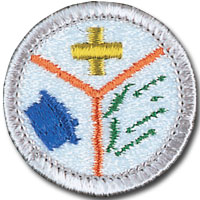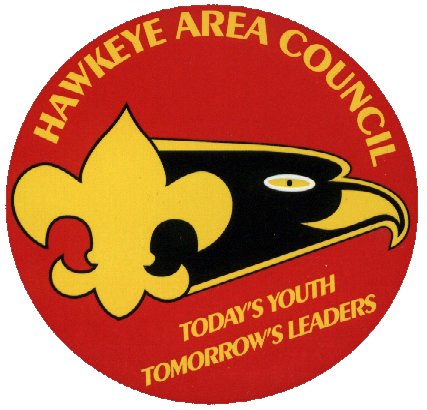H.A.C. -Emergency Preparedness Traditional Geocache
H.A.C. -Emergency Preparedness
-
Difficulty:
-

-
Terrain:
-

Size:  (regular)
(regular)
Please note Use of geocaching.com services is subject to the terms and conditions
in our disclaimer.

Emergency Preparedness
The cache is located along one of the bike trails in town. This
trail does get plowed in the winter. You will be looking for a 30
cal ammo can. In your walk or bike ride you will be on the backside
of "Mt. Trashmore". Since the closing of the old dump they have
been working on clean up the giant pile and it's coming along very
well. If you go at night you may get to see the 30 foot tall flame
where they are burning off the methane from the decomposing trash
buried in the ground. Also at night it's pretty neat to see the
factory across the river lite up in the dark.
Scouts are often called upon to help because they know first aid
and they know about the discipline and planning needed to react to
an emergency situation. Earning this merit badge helps a Scout to
be prepared by learning the actions that can be helpful and needed
before, during, and after an emergency.
Requirements for the merit badge:
1. Earn the First Aid merit badge.
2. Do the following:
1. Discuss with your counselor the aspects of emergency
preparedness:
1. Prepare for emergency situations.
2. Respond to emergency situations.
3. Recover from emergency situations.
4. Mitigate and prevent emergency situations.
2. Make a chart that demonstrates your understanding of each of the
aspects of emergency preparedness in requirement 2a
(prepare,respond, recover, mitigate) with regard to 10 of the
situations listed below. You must use situations 1, 2, 3, 4, and 5,
shown below in boldface, but you may choose any other five listed
here for a total of 10 situations. Discuss this chart with your
counselor.
1. Home kitchen fire
2. Home basement/storage room/garage fire
3. Explosion in the home
4. Automobile crash
5. Food-borne disease (food poisoning)
6. Fire or explosion in a public place
7. Vehicle stalled in the desert
8. Vehicle trapped in a blizzard
9. Flash flooding in town or in the country
10. Mountain/backcountry accident
11. Boating or water accident
12. Gas leak in a home or a building
13. Tornado or hurricane
14. Major flood
15. Nuclear power plant emergency
16. Avalanche (snowslide or rockslide)
17. Violence in a public place
3. Meet with and teach your family how to get or build a kit, make
a plan, and be informed for the situations on the chart you created
for requirement 2b. Complete a family plan. Then meet with your
counselor and report on your family meeting, discuss their
responses, and share your family plan.
3. Show how you could safely save a person from the
following:
1. Touching a live household electric wire
2. A room filled with carbon monoxide
3. Clothes on fire
4. Drowning, using nonswimming rescues (including accidents on
ice)
4. Show three ways of attracting and communicating with rescue
planes/aircraft.
5. With another person, show a good way to transport an injured
person out of a remote and/or rugged area, conserving the energy of
rescuers while ensuring the well-being and protection of the
injured person.
6. Do the following:
1. Tell the things a group of Scouts should be prepared to do, the
training they need, and the safety precautions they should take for
the following emergency services:
1. Crowd and traffic control
2. Messenger service and communication
3. Collection and distribution services
4. Group feeding, shelter, and sanitation
2. Identify the government or community agencies that normally
handle and prepare for the emergency services listed under 6a, and
explain to your counselor how a group of Scouts could volunteer to
help in the event of these types of emergencies.
3. Find out who is your community's emergency management director
and learn what this person does to prepare, respond to, recover
from, and mitigate and prevent emergency situations in your
community. Discuss this information with your counselor, and apply
what you discover to the chart you created for requirement
2b.
7. Take part in an emergency service project, either a real one or
a practice drill, with a Scouting unit or a community agency.
8. Do the following:
1. Prepare a written plan for mobilizing your troop when needed to
do emergency service. If there is already a plan, explain it. Tell
your part in making it work.
2. Take part in at least one troop mobilization. Before the
exercise, describe your part to your counselor. Afterward, conduct
an "after-action" lesson, discussing what you learned during the
exercise that required changes or adjustments to the plan.
3. Prepare a personal emergency service pack for a mobilization
call. Prepare a family emergency kit (suitcase or waterproof box)
for use by your family in case an emergency evacuation is needed.
Explain the needs and uses of the contents.
9. Do ONE of the following:
1. Using a safety checklist approved by your counselor, inspect
your home for potential hazards. Explain the hazards you find and
how they can be corrected.
2. Review or develop a plan of escape for your family in case of
fire in your home.
3. Develop an accident prevention program for five family
activities outside the home (such as taking a picnic or seeing a
movie) that includes an analysis of possible hazards, a proposed
plan to correct those hazards, and the reasons for the corrections
you propose.

Additional Hints
(No hints available.)